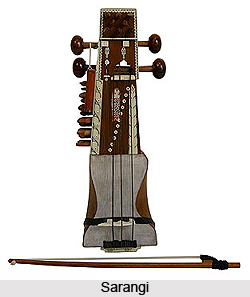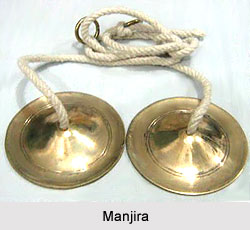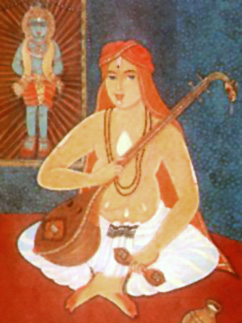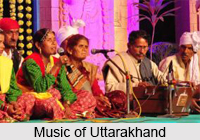 Jalsa is a typical Indian musical concert where top musicians perform. The concert party comprises the Tambura accompanists, the Harmonium player or the Sarangi player and the Tabalchi. They all sit on a raised dais in a kind of a semi-circle, and in the centre sits the great Ustad with his legs neatly folded. In the members of the audience there is a total lack of formality, and they all squat on the ground in front of the great assembly. Everyone tries to get a place as near as possible to the platform. The concerts rarely start on time, and once they commence, there is no such thing as a fixed programme or time. The artist sings whatever he is in a mood to sing, and the performance goes on for hours extending some time right into the morning. It is a well-known fact that as more and more time elapses, the Ustad grows more and more inspired, so that sometimes even after five or six-hours of listening to the music one comes out with feelings of regret.
Jalsa is a typical Indian musical concert where top musicians perform. The concert party comprises the Tambura accompanists, the Harmonium player or the Sarangi player and the Tabalchi. They all sit on a raised dais in a kind of a semi-circle, and in the centre sits the great Ustad with his legs neatly folded. In the members of the audience there is a total lack of formality, and they all squat on the ground in front of the great assembly. Everyone tries to get a place as near as possible to the platform. The concerts rarely start on time, and once they commence, there is no such thing as a fixed programme or time. The artist sings whatever he is in a mood to sing, and the performance goes on for hours extending some time right into the morning. It is a well-known fact that as more and more time elapses, the Ustad grows more and more inspired, so that sometimes even after five or six-hours of listening to the music one comes out with feelings of regret.
When all the musicians have leisurely assembled themselves and have finished tuning their instruments, a hush falls on the crowd, and the Ustad begins his song. He starts by first sounding the Sur (Sa) which he steadies to the drone of the Tamburas, and from that he develops the Alap. This Alap, which takes quite a good few minutes, is actually passages sung from the scale of the Raaga, chosen by the singer. It is meant to familiarize the audience with the melody and all its characteristics. It is a sort of an introduction, and is sung without any Tala. The Tabla remains silent throughout this recitation.
After this has been done and the characteristic of the Raaga has been established, the actual song is at last commenced. It is performed with the full accompaniment of all the instruments, and with all the intricacies of Tala, Tana and all the other graces and embellishments. From this moment a mutual understanding and fellowship springs up between the singer and his Tablawalla. Each works the other up to a crescendo. Another very interesting thing worth a mention is to see how the man wielding the instrument (be it either the Sarangi or the Harmonium) accompanies and keeps pace with the singer.
There is no such thing as a strict following in the accompaniment as the singer is all the time improvising. Under the circumstances, it is impossible for the player to know what off-shoots of melody the singer will indulge in. There is no written record of music before either artist. The singer just sings on, completely absorbed in building the Raaga, seemingly oblivious of his accompanist. He brings out bursts of melody, and just a split of a second after him, within a hair breadth`s interval of time, the instrument is made to produce the same identical notes, in the same speed and with the same embellishments. This magical co-operation of the voice and the instrument, of the singer and his accompanist is one of the most beautiful parts of the Jalsa.




